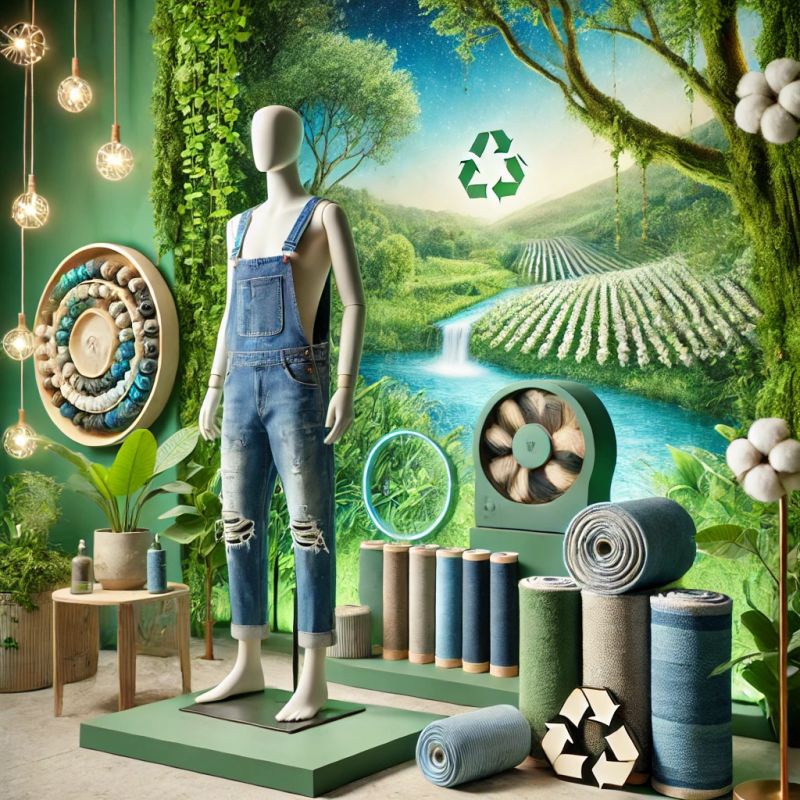Sustainable fashion is no longer just a trend—it is an industry-wide revolution. As brands, manufacturers, and consumers push for greener alternatives, 2025 has ushered in a wave of groundbreaking innovations that redefine how fashion is designed, produced, and consumed. From biodegradable fabrics to AI-driven circular fashion systems, here are the 20 most impactful sustainable fashion innovations of the year.

1. Bioengineered Textiles
New lab-grown fabrics, such as mycelium leather and algae-based textiles, are reducing the need for resource-intensive materials like animal leather and cotton.
2. Regenerative Agriculture for Cotton
Farmers and fashion brands are investing in regenerative cotton farming, which restores soil health, absorbs carbon, and eliminates harmful pesticides.
3. Plant-Based Dyes
Synthetic dyes are being replaced by dyes made from food waste, microalgae, and bacteria, cutting down water pollution and chemical waste.
4. Digital Fashion & Virtual Clothing
With digital fashion and NFT-based apparel, consumers can now purchase and wear clothes in virtual spaces, reducing fabric waste and overproduction.
5. Zero-Waste Pattern Making
New AI-powered design tools optimize fabric use, ensuring minimal to zero fabric scraps during garment production.
6. 3D-Knitting Technology
Advanced 3D-knitting techniques allow for seamless garment production, reducing fabric waste and the need for excess materials.
7. Waterless Dyeing Technology
Breakthrough dyeing methods using CO₂ and ultrasonic technology eliminate the need for excessive water in textile coloring.
8. Biodegradable & Compostable Fabrics
New fibers made from banana leaves, seaweed, and casein (a protein found in milk) naturally decompose without harming the environment.
9. AI-Powered Circular Fashion Platforms
Artificial intelligence is helping brands predict trends, manage inventory, and create resale platforms that extend the lifecycle of garments.
10. Carbon-Negative Footwear
Sneakers and shoes made from carbon-capturing materials, such as algae foam and mushroom leather, are reducing the industry’s carbon footprint.
11. Recyclable Textiles with Mono-Material Construction
Designers are shifting toward single-material garments that can be fully recycled without separating different fibers.
12. Eco-Friendly Performance Fabrics
New high-tech materials, such as breathable biodegradable nylon and plant-based waterproof coatings, are replacing harmful synthetics.
13. Second-Life Fashion & Upcycling Programs
Brands are launching upcycling initiatives where old garments are reworked into new designs, keeping textiles out of landfills.
14. Blockchain for Supply Chain Transparency
Blockchain technology is improving traceability, allowing consumers to verify the ethical sourcing of materials and fair labor practices.
15. Microplastic-Free Synthetic Alternatives
Fashion companies are phasing out conventional polyester and introducing plant-derived synthetic fibers that do not release microplastics.
16. Energy-Efficient Smart Factories
Automated factories powered by renewable energy and AI are significantly cutting carbon emissions in garment production.
17. Subscription & Rental Fashion Services
Clothing rental and subscription services are expanding, reducing the demand for fast fashion and promoting wardrobe sustainability.
18. Low-Impact Leather Alternatives
Innovations in cactus leather, pineapple fiber leather, and lab-grown collagen-based leather are providing stylish, cruelty-free options.
19. Solar-Powered Textiles
New textile technology integrates solar panels into clothing, allowing wearers to generate renewable energy on the go.
20. Consumer Recycling Initiatives
Fashion brands are incentivizing customers to return old clothes for proper recycling, closing the loop on textile waste.
Conclusion
As sustainability becomes a key focus for the fashion industry, these innovations are shaping a future where style and environmental responsibility go hand in hand. With the continued support of technology, science, and conscious consumerism, 2025 marks a significant step toward a greener and more ethical fashion landscape.
